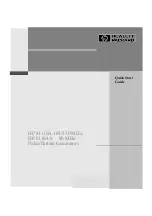Reviews:
No comments
Related manuals for Proclaim 3660

9412
Brand: Quantum Pages: 31

9700 Series
Brand: Quantum Pages: 27

101
Brand: Datapulse Pages: 38

8530 Series
Brand: Quantum Composers Pages: 4

575 Series
Brand: BNC Pages: 63

9510+ Series
Brand: Quantum Composers Pages: 3

N6030-80006
Brand: Agilent Technologies Pages: 126

AVRQ-5-B
Brand: Avtech Pages: 91

AVR-3HE-B
Brand: AVTECH ELECTROSYSTEMS Pages: 44

ICES C5
Brand: Micro-Pulse Pages: 15

ORTEC 480
Brand: Ametek Pages: 16

IN-S Series
Brand: Honeywell Pages: 96

1901A
Brand: HP Pages: 36

81101A
Brand: HP Pages: 118

81104A
Brand: HP Pages: 116

8112A
Brand: HP Pages: 406

8116A
Brand: HP Pages: 9

TEC Multi
Brand: LG Pages: 39

















